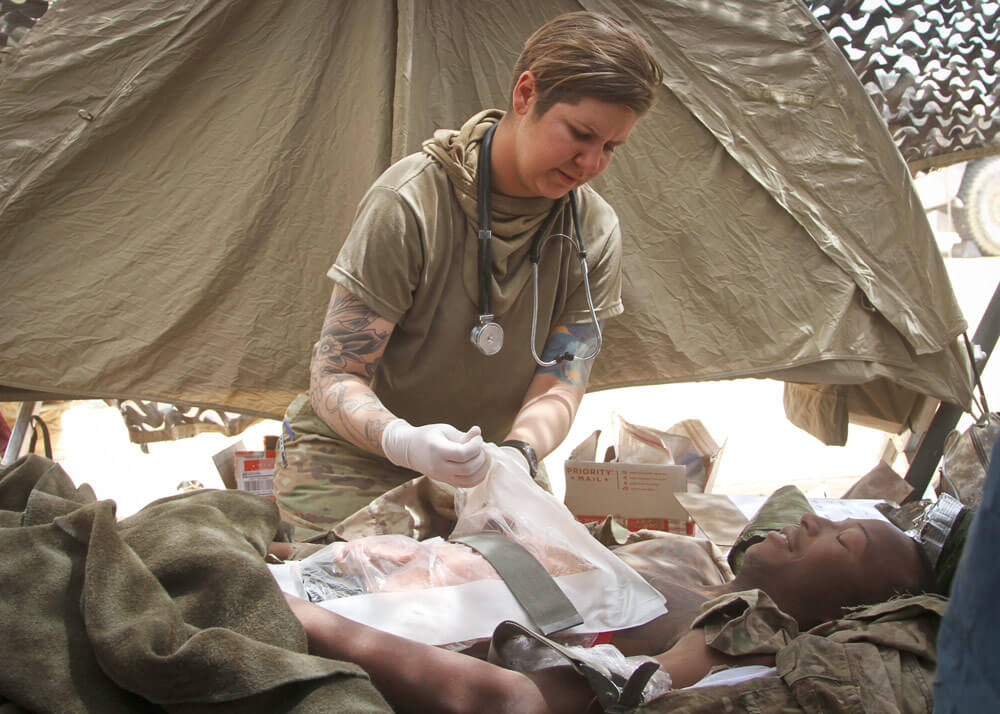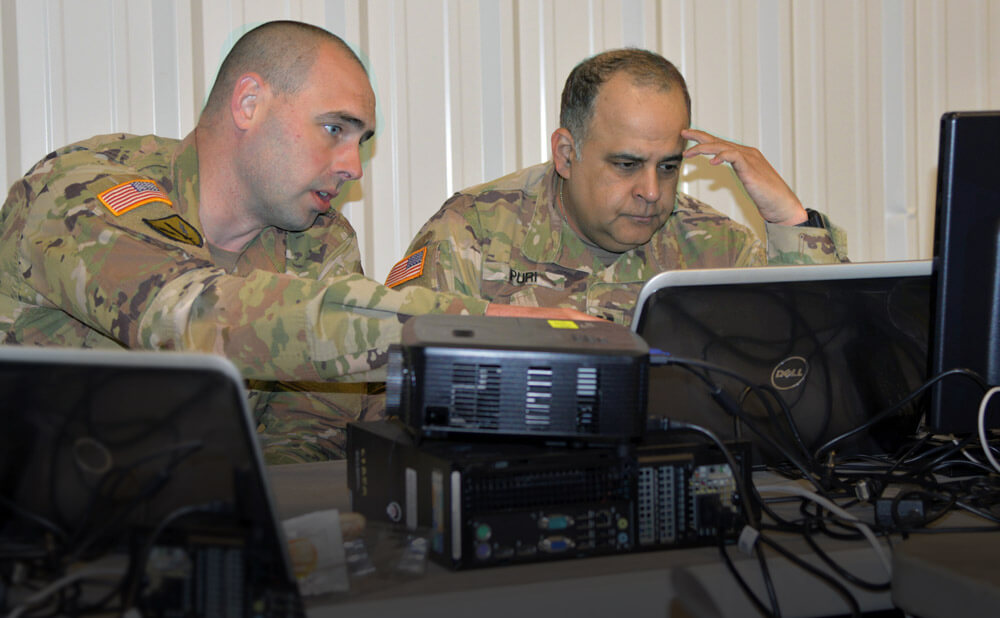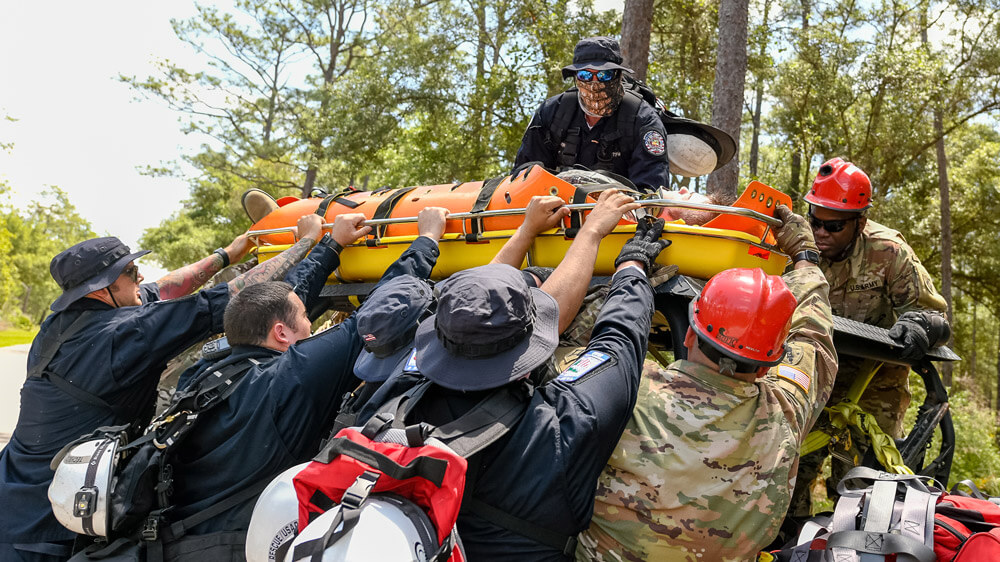Medics with the 2nd Battalion, 198th Armored Regiment, 155th Armored Brigade Combat Team, Mississippi Army National Guard, conducted a mass casualty exercise (MASCAL) on April 16 at Fort Bliss, Texas.
The battalion aid station received six simulated casualties – each with a different set of “injuries” meant to stress the team of medics.
“Essentially, they bring us enough casualties from the line units to overwhelm the forward aid station and battalion aid station assets,” said SGT Tyler Knox, the station’s treatment noncommissioned officer in charge.
Senior leaders of the 177th Brigade Combat Team acted as observer/coach trainers (OC/Ts) to watch and evaluate the medics in the high-stress environment.
“I’m a medical OC/T,” said SSG Carl Adams, a medical operations noncommissioned officer with the 2nd Battalion, 351st Infantry Battalion, 177th BCT. “I’m here to evaluate their ability not only to handle a MASCAL, but to effectively give healthcare to all of the Soldiers in their unit, whether that is preventative or active medical care.”
SSG Adams planned the MASCAL exercise. He constructed the situations, used realistic makeup for the simulated injuries and then followed the medics throughout the aid station as they tried to address various problems at a time.
The exercise started with medics calling in a medical evacuation after applying tactical combat casualty care – stopping any bleeding, dressing wounds and applying tourniquets.
As the MEDEVAC picked up the injured and delivered them to the aid station, SGT Knox and his team of medics were standing by with latex gloves on their hands and stethoscopes around their necks.
As the treatment beds were quickly filled, communication became critical. SGT Knox began by yelling out his patient’s injuries and asking for any assistance he needed. The other medics did the same with their patients.
“We check for major hemorrhaging, make sure their airway is open, make sure they are breathing adequately and make sure they don’t need fluid or resuscitation,” SGT Knox said.
He said the simulation brought valuable experience. Treating a casualty with fake blood and aesthetics, coupled with the pressure of making an evaluation, is much more beneficial than just talking about how to address certain injuries.
After the patients’ injuries were treated and they received the appropriate care, they were evacuated to a higher level of care, concluding the exercise.
BY SGT Brandon Banzhaf, Mississippi NATIONAL GUARD



